The Ultimate Guide: How to Successfully Grow Bitter Melon in Your Garden
Published: 5 May 2024
Bitter melon, also known as the Cucumis character, is a squash native to South and Central America. It has a distinctive bitter taste and is often used in cooking and medicine. Bitter melon has many health benefits. It reduces blood sugar and fights viruses and bacteria.
The fruit has a hard rind and soft, white flesh. It can be eaten raw or cooked in dishes such as stir-fries or curries. In this guide, I’ll share my experience growing bitter melon from seed in your garden.
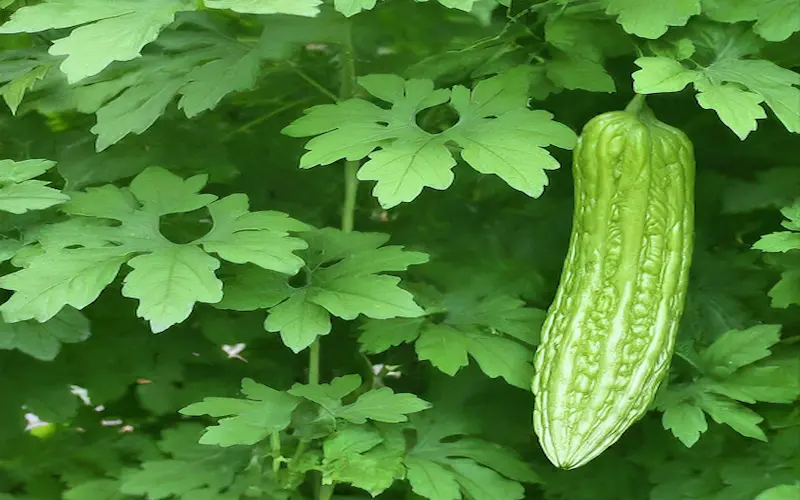
| Bitter Melon Benefit |
|---|
|
Choosing the Right Location
Ideal spot in the garden is the most important step in the learning guide on how to grow bitter melon from seed. These plants love the warmth and need plenty of sunlight to flourish. At least 6 hours of direct sunlight is necessary for the healthy growth of bitter melon plant
It’s also important to consider air circulation when choosing a location. Bitter melon vines do well in areas with good airflow. It lowers the chance of fungal diseases that, like still, damp conditions. I usually opt for an open area away from the walls and fences to ensure adequate airflow.
Bitter melon vines can grow quite long, so provide enough space for them to spread out. I always plan for at least 5 feet between plants to give them room to expand without competition. This spacing also makes later steps like watering, fertilizing, and harvesting more manageable.
Preparing the Soil for Bitter Melon Cultivation
Soil preparation is a crucial step in growing bitter melon. They prefer well-drained soil rich in organic matter. I like to start by loosening the soil to a depth of at least 12 inches so the roots can easily penetrate it.
I then enrich the soil with a generous amount of compost or aged manure. This can improve the nutrient content and enhance the soil’s texture and drainage. Bitter melon plants have nutrient-rich soil from the start
pH levels are another consideration. Bitter melons thrive in acidic to neutral soil, with ideal pH levels ranging from 5.5 to 6.7. If necessary, I adjust the pH by adding lime to raise it or sulfur to lower it. I test the soil before making any amendments to ensure the best environment for my plants to thrive.
Planting Bitter Melon Seeds or Seedlings
When it comes to planting, you can start with seeds or seedlings from a nursery. I prefer starting with seeds, as it lets me control the growing process from the beginning. To ensure a good start, I soak the seeds in warm water for 24 hours before planting. This softens the seed coat and speeds up germination.
You must wait until the threat of frost has passed and the soil has warmed. This is key for planting seeds or seedlings. I usually plant bitter melon seeds about half an inch deep in the soil and space them about 12 inches apart. For seedlings, I tease out the roots before planting them. I put them at the same depth they were in their containers, spacing them 18 to 24 inches apart.
After planting, I give them a good watering, careful not to disturb the seeds or seedlings. Consistent moisture is crucial early on. But it’s also vital not to overwater, which can lead to root rot. I keep the soil moist but not soggy, perfect for the seeds to sprout and the seedlings to take root.
.
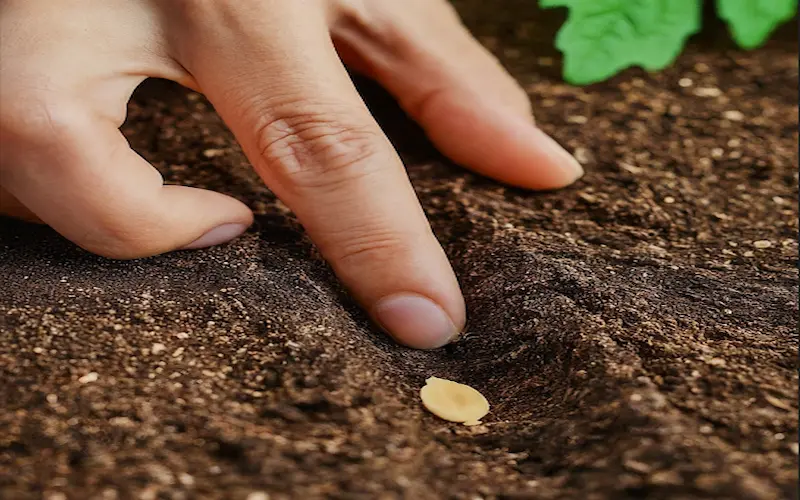
Watering and Fertilizing Bitter Melon Plants
Watering bitter melon plants requires a delicate balance. They need enough water, especially in dry spells. But, they also dislike waterlogged roots. I’ve found that deep, infrequent watering is better than shallow, frequent watering. This encourages the roots to grow deeper into the soil. It makes the plants more resistant to drought.
I fertilize my bitter melon plants every four to six weeks. I use a balanced, water-soluble fertilizer. This ensures they have a consistent supply of nutrients throughout the growing season. I’m careful not to over-fertilize as too much nitrogen can lead to lush foliage but little fruit.
Another critical aspect is mulching. I apply a thick layer of organic mulch around the base of the plants. This helps retain soil moisture, prevent weeds, and control soil temperature. Straw, grass clippings, or shredded leaves work well as mulch. They slowly break down and enrich the soil with organic matter.
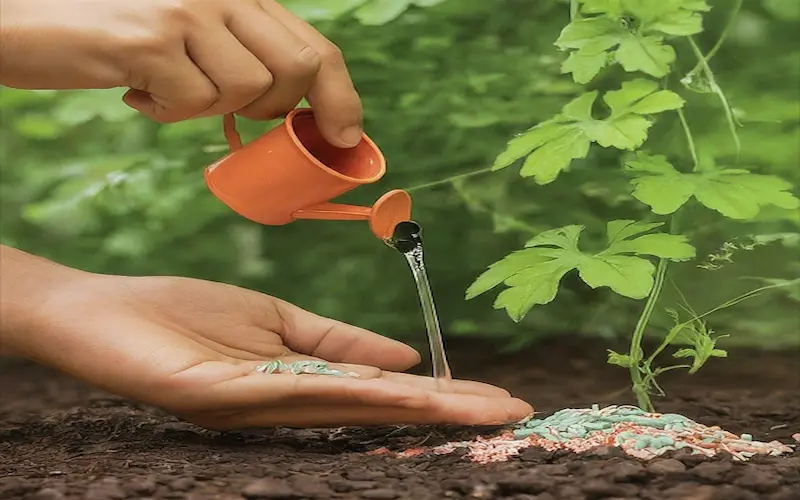
Managing Pests and Diseases in Bitter Melon Plants
Pest and disease management is an ongoing process in the garden. Bitter melon plants, including aphids, cucumber beetles, and spider mites, can attract pests. I regularly check my plants for signs of bugs. I use organic methods, like neem oil or insecticidal soap, to control infestations.
Diseases like powdery mildew and downy mildew can also be problematic. To prevent these, I give my plants lots of space for air. I also avoid wetting the foliage when watering. If I spot signs of disease, I remove and destroy the affected leaves to prevent them from spreading.
Crop rotation is another effective strategy. By not planting bitter melons in the same spot year after year, I reduce the risk of soil-borne diseases. Planting marigolds or nasturtiums with other plants can also help deter pests. It makes a healthier, more diverse garden.
Training and Supporting Bitter Melon Vines
Training and supporting the vines is essential for a healthy bitter melon crop. These vigorous plants can overrun a garden if left unchecked. I climb the vines using sturdy trellises or supports. They save space and keep the fruits off the ground. It reduces the chance of rot and pest infestations.
I prefer to use vertical structures like arbours that can support the weight of the plants. As the vines grow, I guide them onto the trellis, tying them loosely with plant ties if necessary. This also makes the fruits more accessible for harvesting later on.
Pruning is another technique I use to manage the growth of my bitter melon vines. Removing the side branches helps the plant. It focuses its energy on making fewer but bigger fruits. It also improves air circulation around the plant, which is crucial for preventing fungal diseases
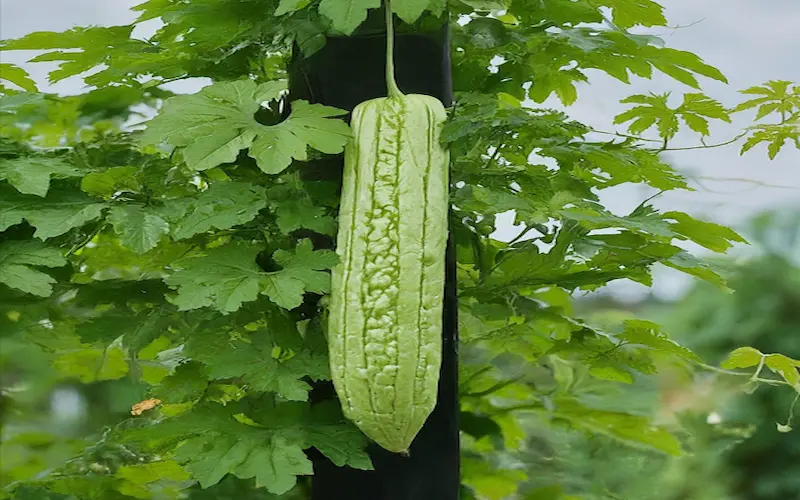
Harvesting and Storing Bitter Melon
Harvesting bitter melon is one of the most satisfying parts of the growing process. I usually start picking the fruits when they’re green and firm, about 8 to 10 inches long. At this stage, they are at their peak flavour and nutrient content. Harvesting them before they turn yellow and become bitter is essential.
I use a sharp pair of pruning shears to cut the fruits from the vines, being careful not to damage the plant. Frequent harvesting encourages the plant to produce more fruits. During the peak season, I check my plants every few days.
You can store bitter melons in the refrigerator for up to a week. For more extended storage, I slice and blanch the fruits before freezing them. This way, I can enjoy the taste of fresh bitter melon long after the growing season has ended.
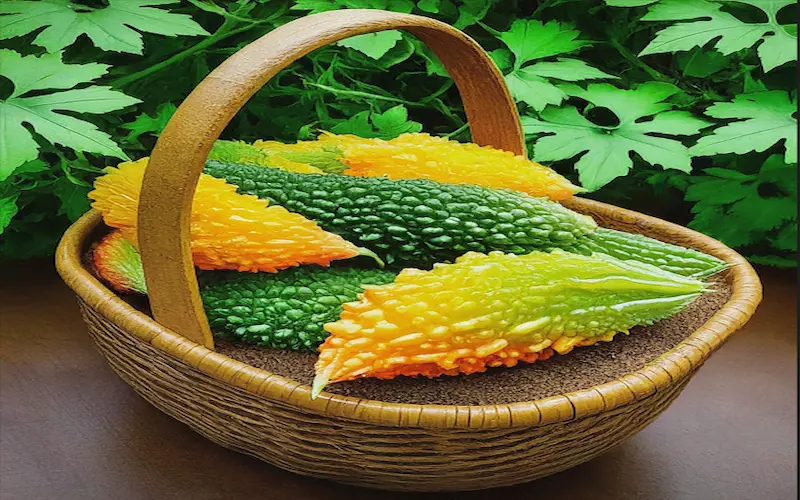
Frequently Asked Questions About How to Grow Bitter Melon from Seed
As an avid gardener, I’ve encountered many questions about growing bitter melon.
How long does it take to grow bitter melon from seed?
Bitter melon takes about 60 to 90 days to grow from seed to harvest. It depends on factors like climate, soil conditions, and care.
what is the best time to plant bitter melon?
In most regions, seeds are planted in the garden after the last frost when the soil warms.
what is the lifespan of a bitter melon plant?
Bitter melon is an annual plant and completes its life cycle in one growing season. Plants may survive longer in tropical climates and produce fruit for several seasons.
How to save bitter melon seeds for future planting.
This is possible and simple. I select a few healthy fruits and let them ripen on the vine until they turn yellow and the skin begins to split. Then, I scoop out the seeds, wash and dry them, and store them in a cool, dry place until the next planting season.
Conclusion
Growing bitter melon in your garden can be rewarding. It has culinary and health benefits. By following the guidelines I’ve shared, you’ll be well on your way to a bountiful harvest. They cover picking the right spot. You also prepare the soil and water, fertilize, and manage pests and diseases.
Support the vines. Harvest on time. Try various recipes. These actions will make the most of your bitter melon crop. You’ll gain the knowledge to handle common questions about growing. This will make you a seasoned grower.

- Be Respectful
- Stay Relevant
- Stay Positive
- True Feedback
- Encourage Discussion
- Avoid Spamming
- No Fake News
- Don't Copy-Paste
- No Personal Attacks



- Be Respectful
- Stay Relevant
- Stay Positive
- True Feedback
- Encourage Discussion
- Avoid Spamming
- No Fake News
- Don't Copy-Paste
- No Personal Attacks



